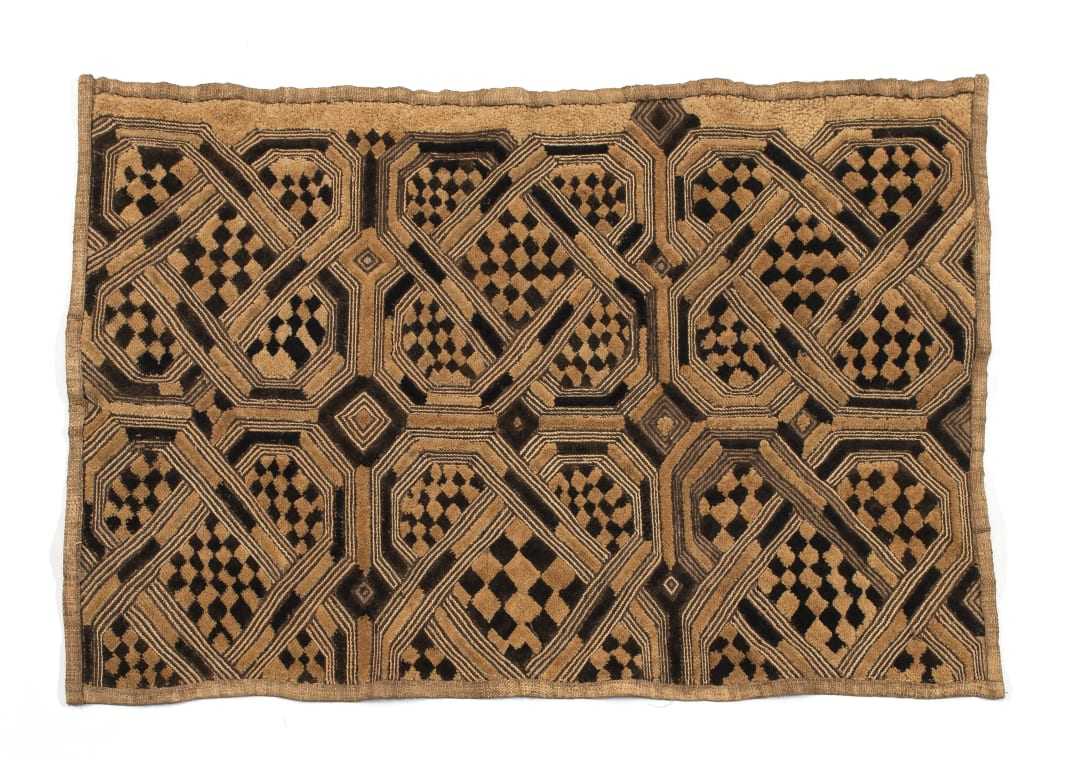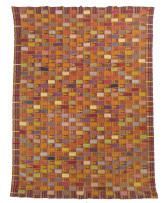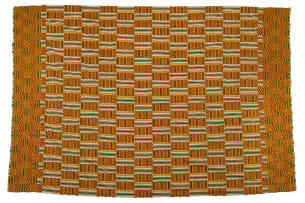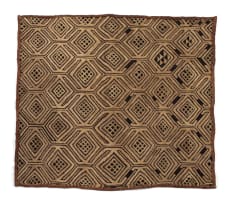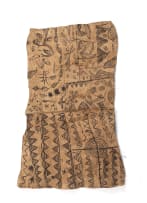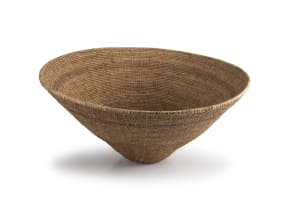Woven Legacies: Innovation & Tradition
Timed Online Auction, 2 - 24 February 2025
Innovation & Tradition
About the Session‘Woven Legacies: Innovation & Tradition’ highlights a diverse range of materials, techniques, and processes from various regions, including Southern, Central and Western Africa. These works coalesce utility, aesthetics and cultural identity. From the tactile threads of textiles to the intricate blending of natural fibres in baskets and the sculptural forms of steel, copper, brass and beads, the concept of weaving is reimagined as a metaphor for connection, storytelling and the passing on of tradition.
Incl. Buyer's Premium & VAT
About this Item
Notes
The Kuba and many other subgroups practice the socially important craft of embroidering plush woven articles. The commercial manufacture of such cloth for export was promoted in the 1930s by missionary stations and continues to be encouraged today. Fortunately, it is relatively easy to distinguish pieces made for the community by skilled artisans, from those produced for craft markets, as the latter typically lack the dense pile and sophisticated designs characteristic of fine pieces.
To achieve the velvet effect, one or more raffia fibres are inserted between the threads of the warp, so that both ends come out of the surface; then with a special flat-blade knife, the threads are cut in satin, creating a relief layer emerging from the base for a few millimetres. The operation is repeated until all the fabric appears covered. The designs are completely abstract, based on a complex series of symmetries.
Classic Kuba cloths can be recognized by their harmonious colour arrangements and the ingenuity of their pattern combinations and development. While the motifs on plush cloth consist only of lozenges, rectangles, and triangles, the mathematician, Donald Crowe, established that the Kuba have exhausted 12 of the 17 possibilities of covering a surface with a self-repeating pattern. However, it is not the simple, more or less random, covering of surfaces with geometric patterns that distinguishes Kuba cloths-particularly the plush cloth. Instead, it is the unique relationship between the designs and the geometrical forms. This relationship is achieved through the provocative non-attainment of the expected and through pattern compositions that appear to be left to chance but consistently fascinate. Early Europeans colonisers, mistakenly attributed this to incompetence."2
"Raffia embroidery among the Kuba expounds a unique balance: between the freedom the embroiderers-who are all women-allow themselves, and the boundaries that hold the surface together. Similarity of line, form, and structure dominates, creating a unity in the picture. This, in turn, allows for seemingly endless variations in detail." 2
- Michael Heuermann
1. John Mack and John Picton (1979) African Textiles.
2. Schaedler, Karl-Ferdinand. Munich: Panterra Verlag, 1987.
Provenance
Michael Heuermann Collection
View all Unrecorded artist, Shoowa Peoples lots for sale in this auction
